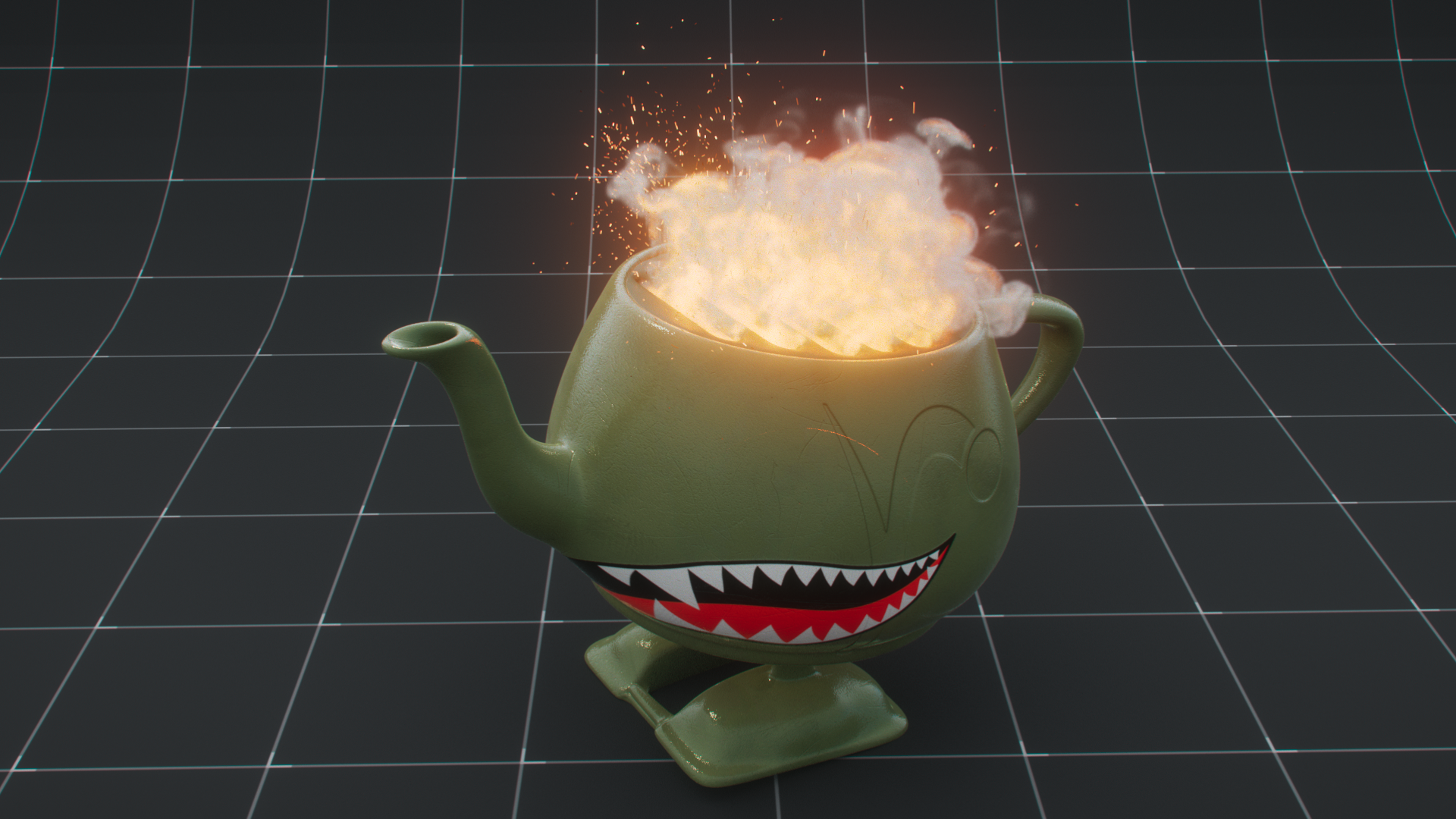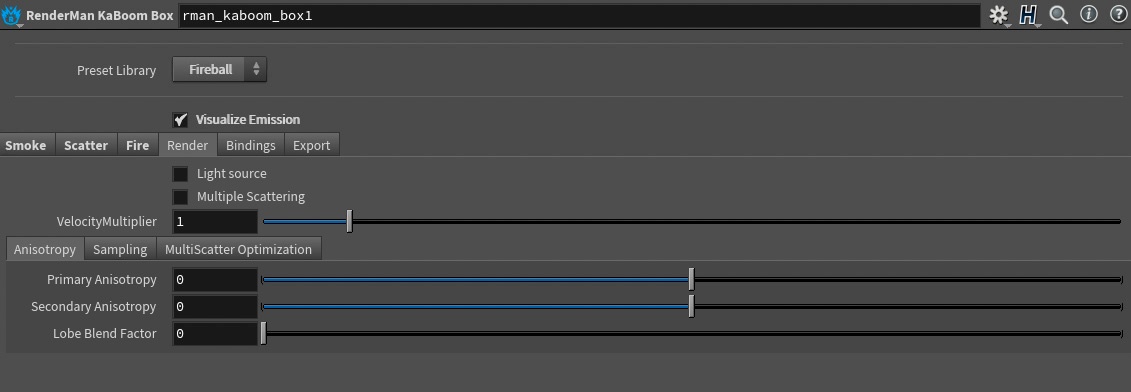Contents
Render
The parameters in this tab on the KaBoom Box HDA control the functions of the PxrVolume shader that lives inside the HDA.
See Volume Material for dedicated documentation on this shader node.
Light Source
Turning on this switch signals to the renderer that the volume should be treated as an emissive light source that will participate in the next event estimation. This is only useful if the emitColor parameter is not black. In most cases, this will lead to reduced noise and faster convergence for parts of the scene illuminated by the volume (potentially including the volume itself).
Note that simply turning this switch on without changing anything else about the scene will typically lead to a brighter result, because it essentially adds an extra bounce of light: for a self-illuminating volume, points in the volume will be self-illuminated by other points in the volume. Therefore, a single scattering volume with __islight turned on rendered with a maximum path length of one is actually equivalent to a multi-scattering volume with __islight turned off, rendered with a maximum path length of two
Multiple Scattering
If set to 0, and the integrator respects this hint, PxrVolume will only perform single scattering: points inside the volume will only be lit directly by light sources. If set to 1, points inside the volume will be lit by indirect illumination as well (light will scatter more than once inside the volume). This effect can be expensive and so defaults to 0 (off). Note that some integrators (e.g. PxrVCM) ignore this hint and always perform multiple scattering. This control has no effect on aggregate volumes.
Velocity Multiplier
The multiplier on the velocity of the volume. This could be useful to convert between velocity defined per frame versus velocity defined per second.
Anisotropy
Primary Anisotropy
Controls the direction in which volume scatters light in the primary lobe. Anisotropy has a range of -1 to 1 and the default is 0 (isotropic). A value of 0 for anisotropy means the volume is isotropic: light is scattered in all directions with equal probability.
A value greater than 0 means the volume is forward scattering: incoming light has a higher chance of being scattered in the same direction (i.e. away from the incoming light).
A value of anisotropy less than 0 means the volume is backward scattering: incoming light has a higher chance of being scattered in the reverse direction (i.e. back towards the direction of incoming light)
Secondary Anisotropy
Controls the direction in which volume scatters light in the secondary lobe. Anisotropy has a range of -1 to 1 and the default is 0 (isotropic). A value of 0 for anisotropy means the volume is isotropic: light is scattered in all directions with equal probability.
A value greater than 0 means the volume is forward scattering: incoming light has a higher chance of being scattered in the same direction (i.e. away from the incoming light).
A value of anisotropy less than 0 means the volume is backward scattering: incoming light has a higher chance of being scattered in the reverse direction (i.e. back towards the direction of incoming light)
Lobe Blend Factor
Controls blending weight between the two lobes. A value of 0 means only the first lobe is active and a value of 1 means only the second lobe is active. Values in between mean both lobes are active.
Sampling
Equiangular weight
he probability of equiangular sampling being used instead of density sampling. Equiangular sampling improves the convergence of volumes close to light sources, while density sampling can be a better technique when dealing with volumes with dense or highly varying density. The default value of 0.5 means both techniques will be used equally and combined with multiple-importance sampling.
If the volumes are dense and far away from light sources then decreasing the equiangular weight may result in better convergence.
This control has no effect on aggregate volumes.
Min samples
Controls the minimum number of samples to take inside the volume per ray. Only used when single scattering. The default is 4.
This control has no effect on aggregate volumes
Max samples
Controls the maximum number of samples to take inside the volume per ray. The default is 4.
This control has no effect on aggregate volumes.
Multiscatter Optimization
MultiScatter Optimization
Controls whether MultiScatter Optimization is applied or not. This control has no effect on aggregate volumes.
Extinction Multiplier
The Extinction multiplier is used in multi-scatter as a way to modify the extinction coefficients for multiple scattering events. The extinction multiplier can be set to any value above 0, and the default is 1 which means no modifications.
A value below 1 decreases extinction coefficients while a value above 1 increases extinction coefficients. This control has no effect on aggregate volumes.
Contribution Multiplier
The contribution multiplier is used in multi-scatter as a way to modify the contribution from direct lighting for multiple scattering events. The contribution multiplier can be set to any value above 0, and the default is 1 which means no modifications.
A value below 1 decreases the contribution from direct lighting while a value above 1 boosts the contribution from direct lighting.
This control has no effect on aggregate volumes.





